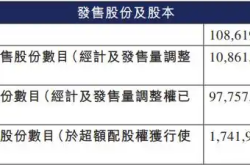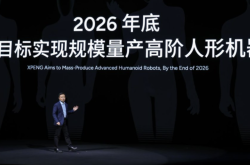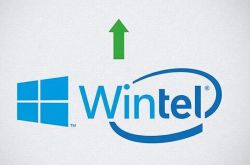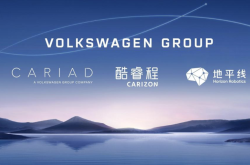Sales decline for five consecutive months: Has NIO Auto reached its darkest moment?
![]() 07/23 2024
07/23 2024
![]() 499
499
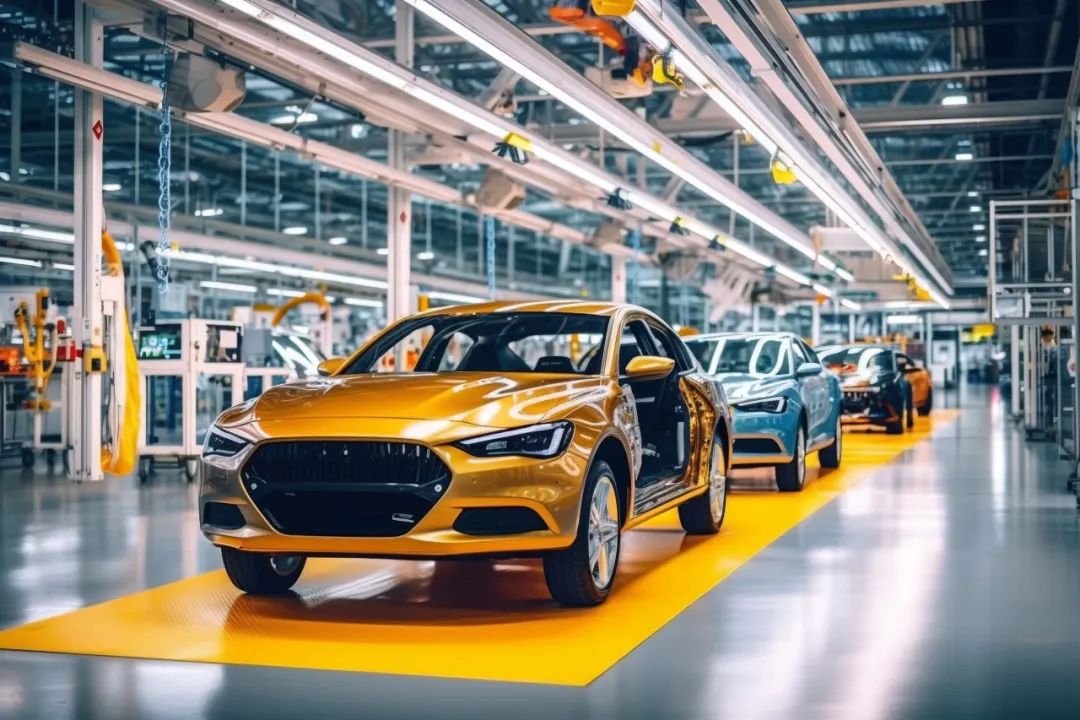
Pursuing counterattacks, time waits for no one!
Editor: Junyi
Wind Review: Mengqi
Source: Rhodium Finance – Rhodium Finance Research Institute
The new energy vehicle market is still booming.
On July 18, the China Association of Automobile Manufacturers released data showing that both production and sales of new energy vehicles in June 2024 exceeded double digits year-on-year. In the first half of the year, production and sales reached 4.929 million and 4.944 million vehicles, respectively, up 30.1% and 32% year-on-year.
This enticing heat has also spread to the capital market. On May 10, Zeekr officially listed on the New York Stock Exchange. On June 26, NIO Auto's parent company, Hetong New Energy, submitted its IPO prospectus to the Hong Kong Stock Exchange. If successful, it will become the fifth Chinese new energy vehicle startup to list in Hong Kong after NIO, Xpeng, Li Auto, and Zero Run.
However, going public is also a matter of strength, and the solidity of fundamentals is crucial to success. In June, NIO Auto sold 12,132 vehicles, a year-on-year decline of 7.8% and a month-on-month decline of 6.9%. Cumulative deliveries in the first half reached 53,770 units, down 13.9% year-on-year, only achieving 17.9% of the annual sales target of 300,000 vehicles. Sales have declined year-on-year for five consecutive months since February this year.
Compared to the above industry growth data, the excitement seems to belong to other competitors. What can NIO Auto show off in its performance report, and where is it stuck? How likely is it to succeed in its IPO?
01
Losses exceeding 18 billion yuan in three years
Short-term borrowings of 4.3 billion yuan
Relying on an IPO to "stay alive"?
Looking back on the road to going public, it has been fraught with setbacks. As early as July 2020, the company announced plans to prepare for a listing on the STAR Market and aimed to complete the listing in 2021, but ultimately failed due to various factors. In 2022, it shifted its focus to the Hong Kong Stock Exchange, and rumors circulated that it would list as early as June 2023, but this also fell through.
The root cause lies in its performance. The prospectus shows that from 2021 to 2023, Hetong New Energy's revenue was 5.087 billion yuan, 13.05 billion yuan, and 13.555 billion yuan, respectively, with a three-year compound annual growth rate of 63.2%. However, it is evident that growth stagnated in 2023. On the other hand, losses continued to soar during the same period, amounting to 4.84 billion yuan, 6.666 billion yuan, and 6.808 billion yuan, respectively, totaling 18.3 billion yuan over three years. When will it break free from the "curse" of losses is a serious topic.
Operating cash flow has remained negative. The net operating cash flow was -2.991 billion yuan in 2021, -5.408 billion yuan in 2022, and -4.354 billion yuan in 2023.
According to Haibao News, Hetong New Energy had 6.757 billion yuan in cash and 3.926 billion yuan in short-term borrowings at the end of 2022, with cash on hand sufficient to cover these borrowings. However, by the end of 2023, cash on hand had fallen to 2.837 billion yuan, while short-term borrowings had risen to 4.317 billion yuan, highlighting the need to be vigilant about cash flow pressure.
At the beginning of 2024, the company was even reported to have delayed year-end bonuses and halted production. According to the National Business Daily, on the evening of February 24, NIO Auto CEO Zhang Yong posted on Weibo in response to rumors of delayed year-end bonuses, stating that employee bonuses in 2023 were tied to performance evaluations, and that the annual performance coefficients and amounts would be finalized and distributed in March.
Zhang Yong added that since 2016, employee salaries/bonuses/social insurance have never been late a single day. Despite the difficult year last year, they had never considered salary cuts or layoffs. Perhaps a few employees are not used to tough times, and it seems necessary to pass on the chill to everyone.
While the timely clarification of rumors and willingness to take responsibility are commendable, there is still a hint of chill between the lines.
It should be noted that the prospectus shows that since 2017, Hetong New Energy has completed 10 rounds of financing, raising a total of 22.844 billion yuan.
According to Jiemian News, some capital market insiders bluntly stated that since most automotive startups are in a loss-making state, investors are no longer willing to pay a premium for the distant market returns of electric vehicle companies. "Nowadays, institutional investors are not optimistic about 'NIO, Xpeng, Li Auto,' and it is difficult for them to lend a helping hand to second-tier startups."
While these words may be biased, they also represent a portion of market sentiment. With sustained losses and a cooling primary market, going public to stay alive seems reasonable. However, the secondary market is equally demanding, especially the Hong Kong stock market, which is dominated by institutions. To successfully list and enjoy good liquidity, core competencies must be demonstrated under the spotlight. In other words, product strength must speak for itself, giving the market a quick glimpse of profitability.
02
From annual sales champion to five consecutive months of decline
What went wrong? NIO L is the key player
There is a clear logic in the automotive industry: profitability depends on sales, and sales depend on product competitiveness.
From 2020 to 2022, NIO Auto sold 15,100, 69,700, and 152,100 vehicles, respectively. With robust growth, it surpassed "NIO, Xpeng, Li Auto" in 2022 to become the annual sales champion among new energy vehicle startups.
However, in 2023, its sales began to decline, reaching only 127,500 vehicles for the year, down 16.16% year-on-year.
The fatigue has continued in 2024, with cumulative deliveries of 53,770 units in the first half, down 13.9% year-on-year, achieving only 17.9% of the annual sales target of 300,000 vehicles. Sales have declined year-on-year for five consecutive months since February. If this trend continues, the annual target of 300,000 vehicles is likely to be missed.
As everyone knows, the automotive industry has a strong scale attribute, and insufficient sales mean lower fixed cost allocations (such as factory construction, equipment depreciation, R&D expenses, etc.), leading to higher unit costs per vehicle. According to Haibao News, from 2021 to 2023, NIO Auto's gross profit was -1.748 billion yuan, -2.939 billion yuan, and -2.014 billion yuan, with gross margins of -34.4%, -22.5%, and -14.9%, respectively. While there has been promising improvement, gross profit has remained negative.
Looking back at its heyday, it was product-driven. In 2020, NIO Auto launched the NIO U and NIO V, with starting prices after subsidies as low as around 140,000 and 60,000 yuan, respectively. With larger rear seat space, ideal driving range, and ultra-high cost-effectiveness, it precisely targeted the ride-hailing market, where it had few competitors, leading to significant sales growth. In 2022, it became the first new energy vehicle startup to exceed 150,000 annual sales.
However, even in such a strong sales year, the company did not turn a profit. To escape the embarrassment of "losing money on every car sold," NIO Auto began to enter the mid-to-high-end market. In the second half of 2022, it launched the NIO S, priced in the range of 160,000 to 350,000 yuan. In April 2023, the NIO GE debuted, priced around 200,000 yuan.
Unfortunately, judging from the above performance, this upward "test" was not successful, and NIO Auto did not gain much share in the mid-to-high-end market. Industry analyst Wang Yanbo believes that one reason is that the early low-end strategy had already occupied consumers' minds, and it was not possible to change this perception with just a few new products in the short term. Another reason is that the mid-to-high-end market is fiercely competitive, with numerous strong rivals. NIO Auto, which is moving up from the bottom, lacks distinctive advantages. Meanwhile, its original market also caught fire, with the rise of BYD Seagull, Wuling Bingo, and others, ultimately leading to a decline in sales.
After much soul-searching, NIO Auto refocused on the low-to-mid-end market. In April 2024, the NIO L was launched, with four versions priced between 129,900 and 159,900 yuan. Sales performance has been good, with cumulative orders exceeding 30,000 by May 27.
Caught off guard by this sudden positive news, the company seemed unprepared. On May 20, Zhang Yong posted on Weibo, saying, "Now I regret being too conservative in my sales forecast for the NIO L and my inaccurate prediction of the model mix. Deliveries are too slow, and I apologize to our customers." On June 4, he posted again, saying, "Since the launch of the NIO L, current orders are in short supply, and the factory is working overtime to ensure supply."
Looking at the industry sales figures for the first half of the year and comparing them to NIO Auto's own performance, it is clear that more effort is needed. With a product finally showing promise, it would be a shame to miss opportunities due to delivery delays, especially given the increasingly competitive market with plenty of choices.
Industry analyst Sun Yewen said that opinions on the production capacity issue vary, with some believing it to be a form of hunger marketing and others attributing it to insufficient supply chain support. In the past, companies like Xiaomi and NIO's ET5 have suffered from inadequate deliveries. NIO Auto, which has been in the market for many years, is certainly aware of the power of hunger marketing. However, given the current competitive environment, the speed of competitors' new product launches, and its own sales growth, relying solely on marketing tactics can be a dangerous game. After all, in times of drought, speed is of the essence. More consideration may be given to inaccurate order and sales forecasts, as well as shortcomings in the supply chain, such as parts and chips, leading to insufficient production line efficiency and weaker flexible production capabilities.
03
Marketing perspectives
Introspection vs. Real Change
Who is right and who is wrong will be answered by time. What is certain is that Zhang Yong is not fighting alone. According to Red Star Capital Bureau, after NIO Auto's production capacity issues were exposed, Zhou Hongyi urged Zhang Yong to focus on delivery issues, or else they would not be able to handle the "skyrocketing traffic."
From the shareholding structure, Hetong New Energy's founder Fang Yunzhou and entities controlled by Fang Yunzhou hold 11.82% of the shares, while investors under a concerted action arrangement dominated by government funds hold 20.28%, Minsheng Equity holds 11.46%, and Huading Capital holds 9.82%. 360 Group, founded by Zhou Hongyi, is the fifth-largest shareholder with a 9.12% stake.
According to TMTPost, three years ago, Zhou Hongyi invested 1.9 billion yuan in NIO Auto. With the delay in going public, Zhou Hongyi has become increasingly involved in NIO Auto, frequently acting as a marketing "mentor" and passing on his expertise to Zhang Yong. He has also used his celebrity status to promote NIO Auto and attract traffic.
Regarding the popularity of the NIO L, Zhang Yong specifically posted that with the help and support of Lao Zhou (Zhou Hongyi), the NIO L has received unprecedented attention since its launch, with orders exceeding supply. "Half the credit for the success of the NIO L goes to Lao Zhou (Zhou Hongyi)."
The consideration here is that ultimately, Zhang Yong is the CEO. Behind the thank-you posts, does it also reveal a lack of marketing ability? Previously, facing disappointing sales of other models, Zhang Yong took to Weibo to ask netizens for advice, directly stating that the marketing system had let down the R&D team's efforts.
According to China Business Network, during a live streaming event for NIO Auto in late March 2024, Zhou Hongyi told Zhang Yong that NIO Auto had issues with marketing and product planning, and that senior executives should learn from Xiaomi, especially Lei Jun.
He even suggested changing the company name, arguing that consumers felt awkward about NIO Auto's use of letters for its new car names, making them difficult to remember. He criticized the poor naming of NIO Auto's products, with letters like U, V, X, and L sounding strange and lacking strong external promotion. Despite NIO Auto's interiors being on par with top luxury cars, the market has not fully perceived these advantages.
In response, Zhang Yong conducted a profound reflection, citing issues such as the transition between old and new products, overly high pricing of new products (which, while adjusted in the second half, lost first-mover advantage), significantly reduced production of loss-making product lines, outdated marketing methods, and centralized yet weak management at the marketing headquarters.
The tide of competition is relentless, and progress is necessary for survival. In the first half of 2024, the NIO L sold a cumulative total of 10,783 vehicles, with 5,283 vehicles sold in June, setting a new high since its launch and accounting for 67.48% of Hetong Auto's total sales. According to data from Autohome and the China Passenger Car Association, it ranked 49th in SUV sales.
While the ranking has risen encouragingly, there is still room for improvement compared to some more popular competitors. At the same time, the fact that the NIO L alone accounts for nearly 70% of sales also reflects the embarrassment of other models. After all, no matter how capable the NIO L is, it cannot support the entire company alone. How to boost sales of other models and quickly incubate new matching products remains a daunting task for NIO Auto and Zhang Yong. With time running out, the above reflections must lead to tangible changes for the outside world to see.
04
Leading in overseas markets, precise strikes
Expecting domestic and international success
After sorting through the issues, it is clear that NIO Auto has its fair share of flaws to address and shortcomings to compensate for. However, there are always two sides to a coin, and the company's bright spots cannot be ignored. For example, it has made significant strides in overseas markets, with 17,687 vehicles exported in the first half of 2024, up 154% year-on-year, ranking first among new energy vehicle startups. It has become the fastest new energy vehicle startup to establish three overseas factories in Thailand, Indonesia, and Malaysia, and is simultaneously advancing its first localization assembly project in South Asia.
Focusing on the use of funds raised from this IPO, the primary goal is to strengthen overseas expansion. Future investments will target the Southeast Asian market, with rapid expansion plans for potential markets in Latin America, the Middle East, and Africa.
Nezha Auto emphasizes that the overseas electric vehicle market possesses significant growth potential, expected to increase from 5.2 million units in 2023 to 13.6 million units in 2028, with a compound annual growth rate (CAGR) of 21.4%. Among these, the overseas sales of electric vehicles from Chinese companies are projected to rise from 600,000 units in 2023 to 4.5 million units in 2028.
Nezha Auto has stated that it has already officially entered the African market, with its first store in Kenya now open, and it will accelerate its global market layout.
However, as always, a larger market means stronger competition. Other competitors are also actively expanding overseas. In the long run, achieving success both domestically and internationally is key to solving the sales puzzle. Not fully capitalizing on the Chinese market, the world's largest consumer market for new energy, is indeed a painful loss. According to the China Securities Journal, passenger car sales in China will reach 26.4 million units in 2023, accounting for approximately 34.9% of global sales, with new energy vehicles being the critical driver of growth.
Looking back at the sales rankings for June, the top five in new forces brands were GAC Aion with 45,000 units, Li Auto with 32,000 units, Leapmotor with 13,000 units, Nezha with 12,000 units, and NIO with 10,000 units. To be fair, although Nezha experienced a slight decline in sales, its overall performance remains stable. However, there is a significant gap between brands, coupled with a target of 300,000 units in annual sales, ongoing losses, intensified external price wars, and rapid iteration of new products from competitors, leaving Nezha with limited time to consolidate, catch up, and counterattack.
In a sense, after experiencing consecutive declines in sales, Nezha might be at the tail end of its darkest period. The uphill battle is also brewing the potential for a counteroffensive, and the IPO serves as both a rallying cry and a window of opportunity. Whether Nezha can align efforts top to bottom and strategically strike to revive its sales performance is the key focus.
It is worth noting that the Nezha L pure electric version will begin deliveries in July. How big of a splash will it make?

